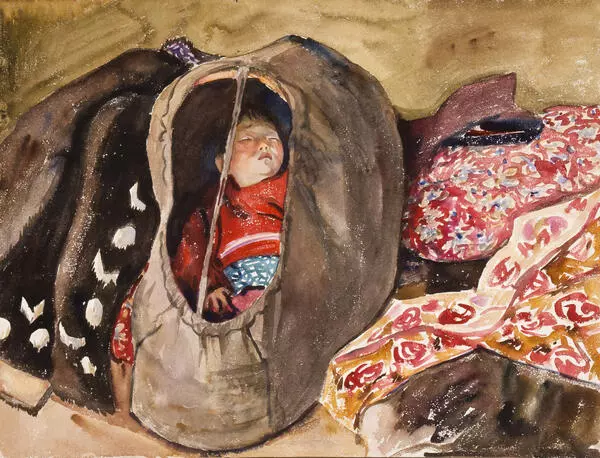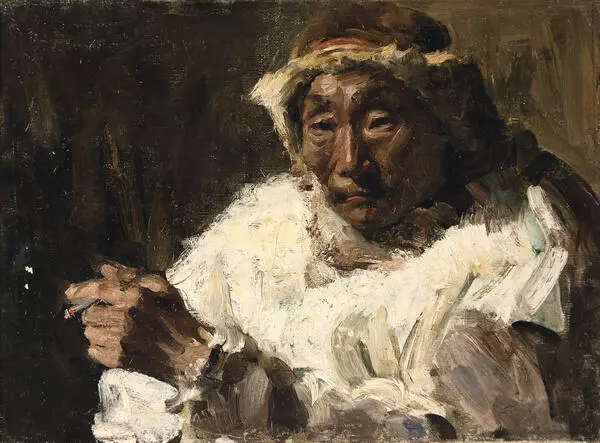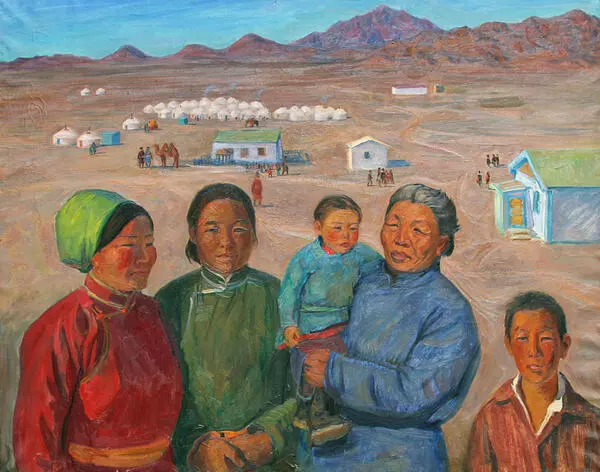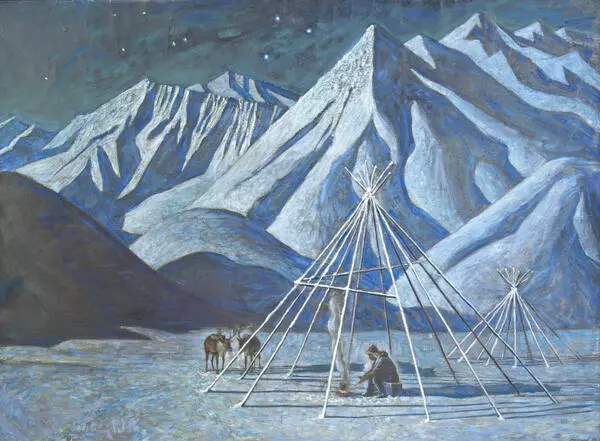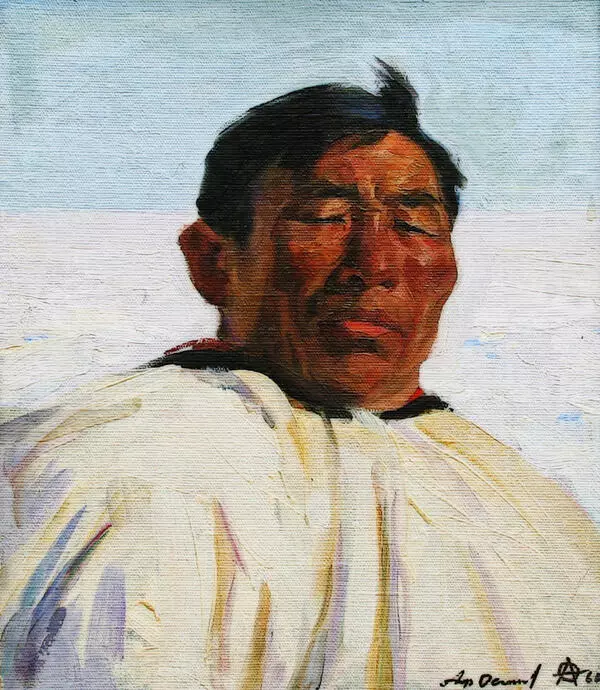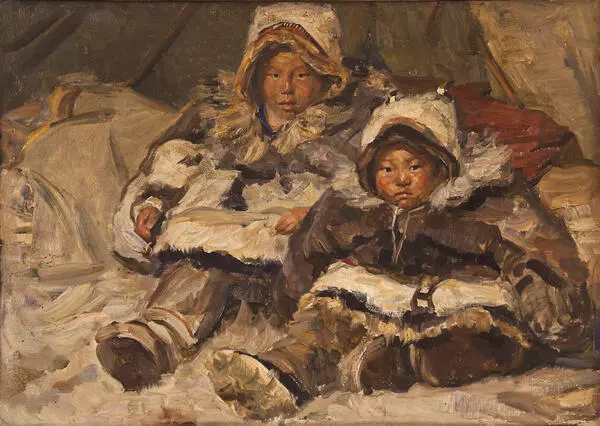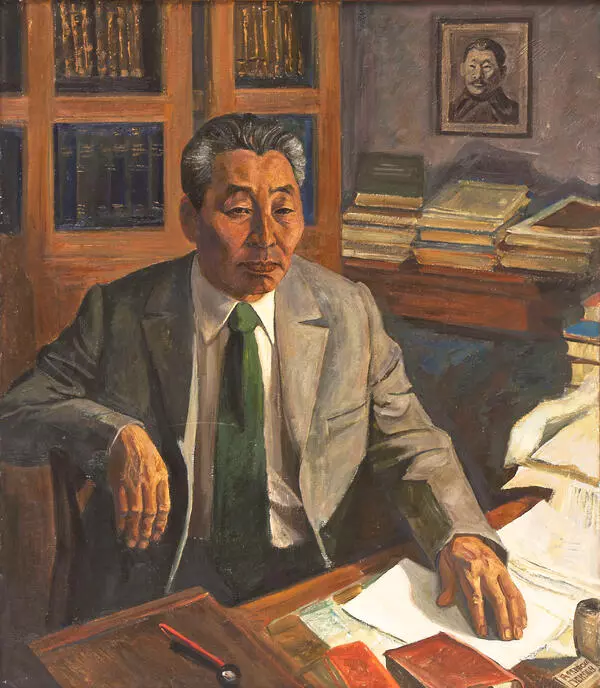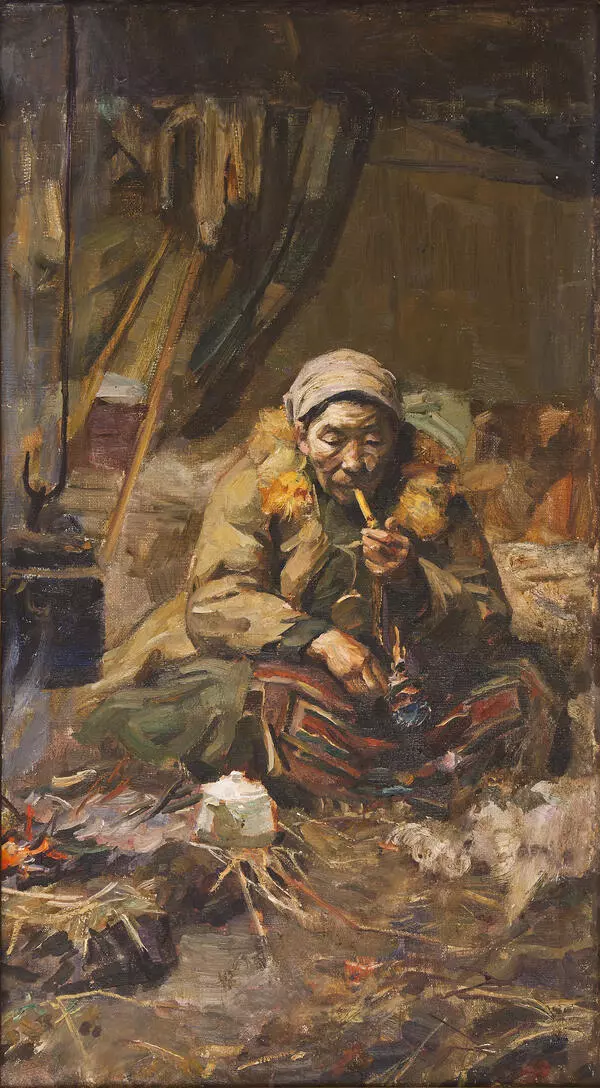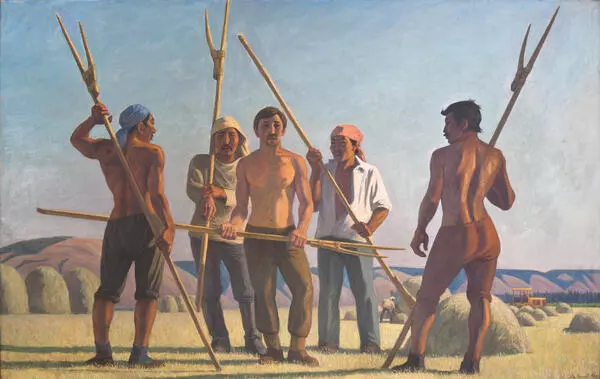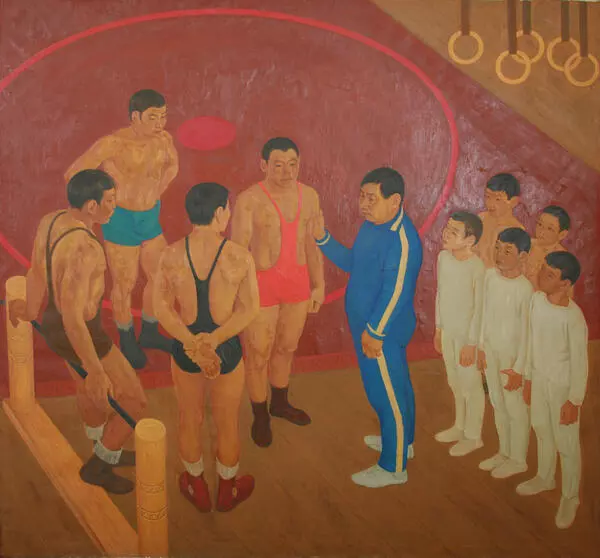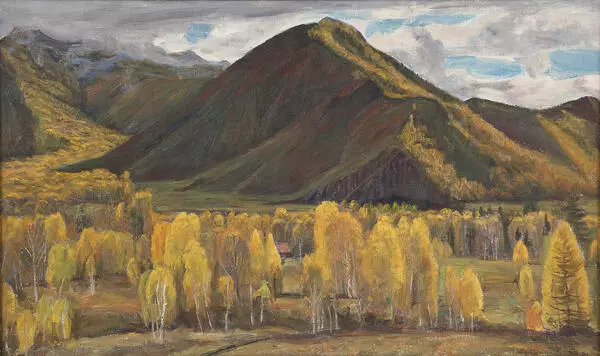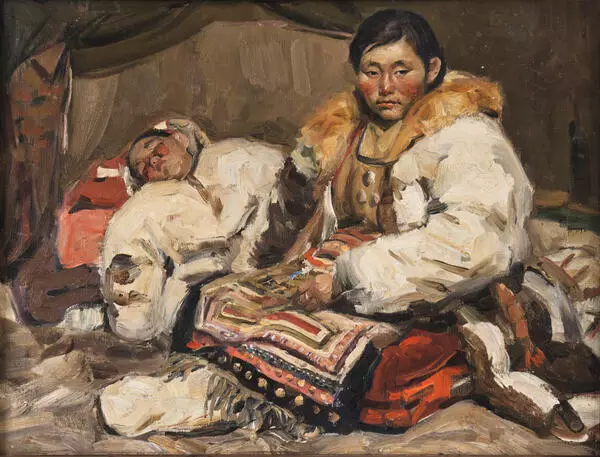Afanasy Osipov is a Yakut painter, academician of the Russian Academy of Arts, People’s Artist of the USSR, winner of the Ilya Repin State Prize of the RSFSR. The exhibition features paintings from the Northern cycle, in which Osipov depicted residents of a harsh climate and restrained Northern landscapes. While being in the tundra for a long time, the artist studied in many ways the traditional way of life of the Northern peoples, touched their original life values, and captured what he saw in his works.
Osipov first came to the Arctic North in early 1958. Then he visited the coast of the Arctic Ocean. Together with Semyon Danilov who later dedicated his “Northern” poem “Happiness of the Eagle” to him, he made trips to distant villages and camps of reindeer herders in the Nizhnekolymsky District, whose indigenous population is Chukchi and Evens. Since then, the edge of the tundra has often appeared on the artist’s canvases. In rare years, he did not find an occasion not to visit one of his nomad camps. Sometimes, the artist spent whole weeks alone in the tundra expanses and returned from there to Yakutsk with a lot of sketches, paintings, and ideas.
The Lower Kolyma tundra, the Indigirka Valley with high snow-capped mountains, the expanses of Oymyakon, Alazei, Moma, Tompo, Verkhoyanya, and the Kharaulakh Range near the Arctic Ocean, all this was seen and captured by the artist. He devoted about 10 years of his creative life to the nature of the tundra and its inhabitants.
Afanasy Osipov also captured images of women and children. One of the most striking paintings in his cycle can be called the etude ‘Andryusha’, which the painter created in 1969. The character depicted on the canvas on a traditional sledge is a small boy, the son of reindeer herders. He is dressed in the national dress of the Northern peoples sewn from reindeer fur, and decorated with belts and traditional embroidery. Touching and spontaneity of the image is given by children’s plastic subtly noticed by the artist. The canvas is drawn in etude technique using large strokes. Thus, only the boy’s face is drawn subtly. The color scheme is dominated by cold shades. They convey the restraint and severity of the Northern nature.
Osipov first came to the Arctic North in early 1958. Then he visited the coast of the Arctic Ocean. Together with Semyon Danilov who later dedicated his “Northern” poem “Happiness of the Eagle” to him, he made trips to distant villages and camps of reindeer herders in the Nizhnekolymsky District, whose indigenous population is Chukchi and Evens. Since then, the edge of the tundra has often appeared on the artist’s canvases. In rare years, he did not find an occasion not to visit one of his nomad camps. Sometimes, the artist spent whole weeks alone in the tundra expanses and returned from there to Yakutsk with a lot of sketches, paintings, and ideas.
The Lower Kolyma tundra, the Indigirka Valley with high snow-capped mountains, the expanses of Oymyakon, Alazei, Moma, Tompo, Verkhoyanya, and the Kharaulakh Range near the Arctic Ocean, all this was seen and captured by the artist. He devoted about 10 years of his creative life to the nature of the tundra and its inhabitants.
Afanasy Osipov also captured images of women and children. One of the most striking paintings in his cycle can be called the etude ‘Andryusha’, which the painter created in 1969. The character depicted on the canvas on a traditional sledge is a small boy, the son of reindeer herders. He is dressed in the national dress of the Northern peoples sewn from reindeer fur, and decorated with belts and traditional embroidery. Touching and spontaneity of the image is given by children’s plastic subtly noticed by the artist. The canvas is drawn in etude technique using large strokes. Thus, only the boy’s face is drawn subtly. The color scheme is dominated by cold shades. They convey the restraint and severity of the Northern nature.



